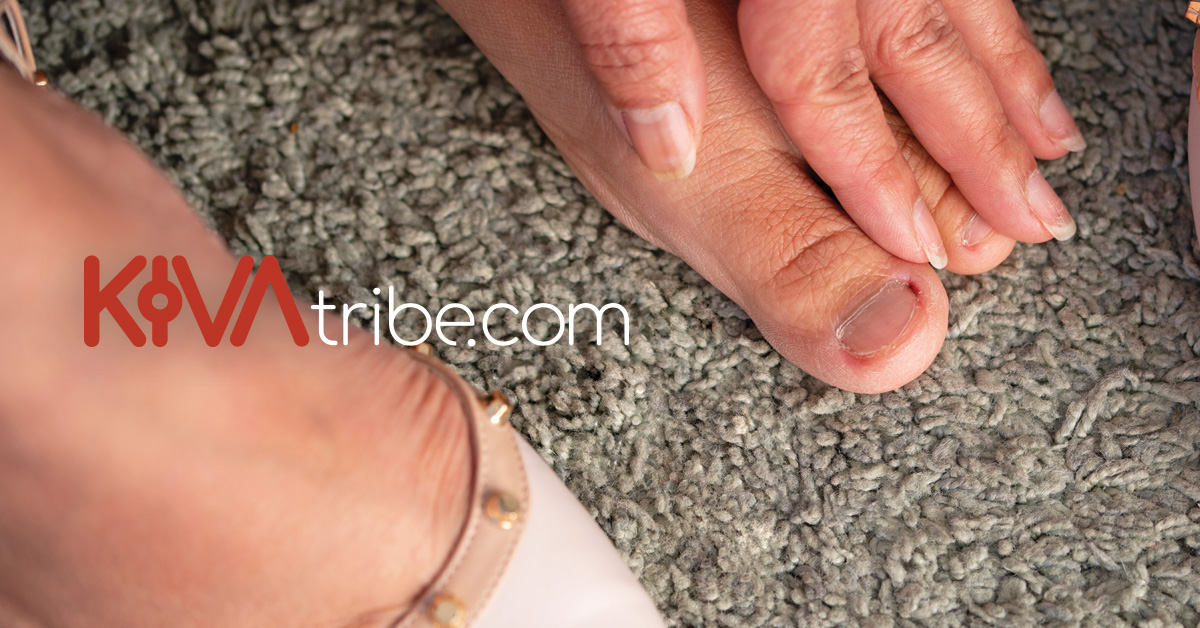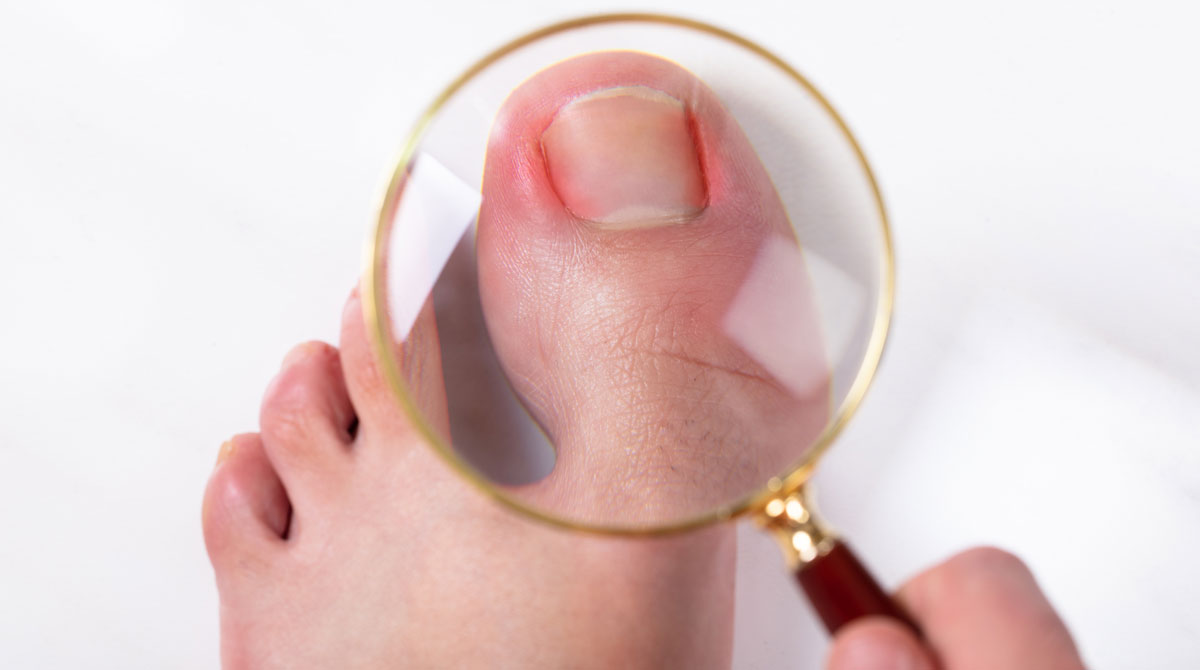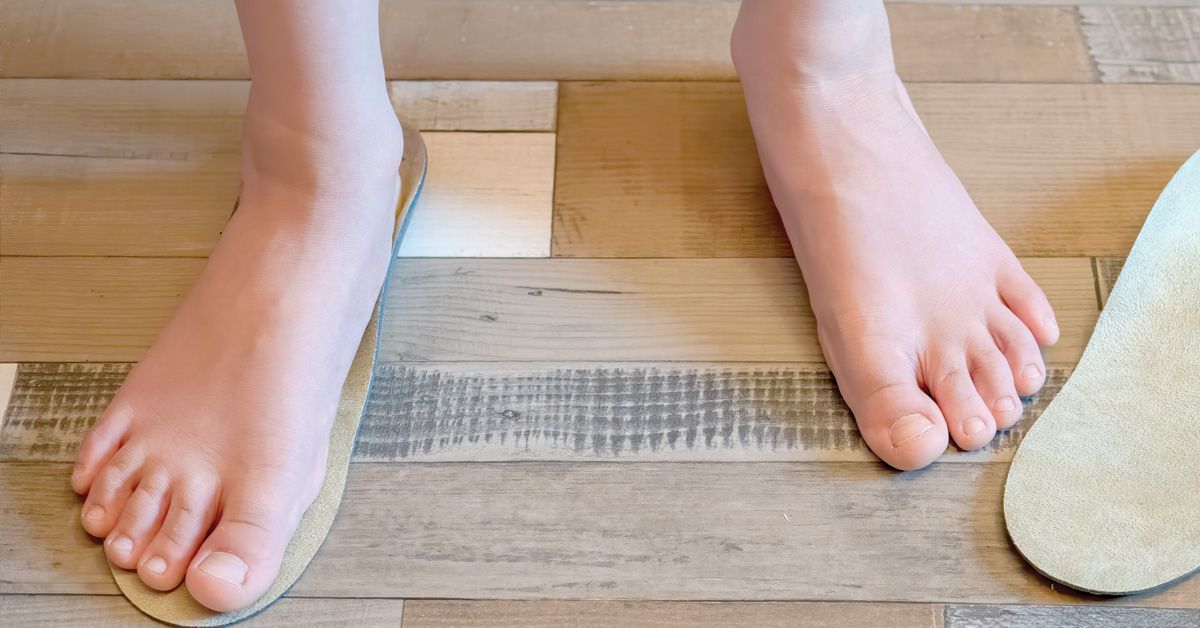
Can Shoes Cause Ingrown Toenails?
The short answer is yes! Almost everywhere you look you’ll find it listed amongst factors known to contribute to ingrown toenails.
We can help you learn how to treat ingrown toenails, and even better, how to avoid them in the first place.
A Well Known Secret
It’s no secret in the medical community that shoes are one cause of ingrown toenails, with many reputable sources like the Mayo Clinic & Cleveland Clinic citing it as a contributing factor.
In fact it’s rare for ingrown toenails to occur in barefoot communities¹.
Almost every mainstream source you read will tell you to avoid tight fitting shoes and socks if you want to avoid ingrown toenails, so clearly they believe that pressure from shoes is a major factor.
What are Ingrown Toenails?

Ingrown toenails are the most common nail disorder encountered by podiatrists² and they account for approximately 20% of foot problems in primary care³.
Ingrown toenails usually affect the big toe, where the corner or side of the toenail grows into the skin. Initially this causes pain, but can progress to swelling and even infection if left untreated.
If the pain is severe or spreading, you should visit a health practitioner to avoid further complications. Be particularly careful if you have diabetes or any condition that involves poor blood flow to the feet as risk of complications are higher. Signs of infection like severe pain, redness and pus should not be ignored as left untreated, the infection can spread to the bone⁴.
What are the Causes of Ingrown Toenails?
The main factors in the development of ingrown toenails are; poor trimming, pressure on the affected toe, poor foot hygiene, and nail abnormalities⁵.
According to the Journal of Modern Pharmacy (1996), pressure on the affected toe is a key factor in the causation of ingrown toenails. They explain that nails become embedded in the skin following a continuous period of pressure that presses the nail into the soft tissues¹.
So clearly shoes are not the only factor that causes ingrown toenails, but they do play an important role.
How to Know If You Have an Ingrown Toenail
According to the Mayo Clinic⁴, symptoms of ingrown toenail include pain, tenderness, inflamed skin, swelling, and infection. With mild ingrown toenails, the pain may only be present when you put pressure on the toe. You may also see your nail curving into the skin, a buildup of fluid, overgrowth of skin, bleeding or pus⁷.
If you are suffering from an acute infection or a lot of pain, especially pain that gets worse, liquid or pus discharge, warmth in the affected area, or if there’s a smell, there’s likely an infection and you should visit your health practitioner for advice. Soak your foot in tepid soapy water three times daily, and decrease activity until the situation improves⁵.
How to Care for Ingrown Toenails

Online experts recommend a number of conservative treatments that can help many of us find relief before resorting to more radical treatments.
We’ve collated this advice for you into a step by step plan:
Learn How to Cut Your Nails
Cut toenails straight across rather than in a curved shape. Don’t cut them too short. It can be tempting to try and cut out the part of the nail that is digging into the skin, but you should be very careful with this as you may do more harm than good. It’s best to get guidance from your health practitioner⁵.
Change Your Socks and Shoes
Avoid tight footwear, especially shoes with pointed toes, or shoes that are too short, too loose, fit poorly or do not allow proper ventilation. Avoid socks that are too tight or loose at the toes.
Instead, opt for socks and shoes that do not put pressure on your toes. Toe socks are ideal, and choose shoes with a wide toe box that does not cramp your toes. However, it’s important to wear protective footwear if you work in a job where your toes might be at risk of further damage² ⁴ ⁵ ⁷ ⁸ ⁹.
Your toes should be able to wiggle freely inside your shoes, and always allow about a half inch of space between the ends of your toes and front of the shoe. Ensure that your shoes are secure on your feet. Avoid high heels which encourage your toes to slide forward into the front of your shoe¹¹.
Address Your Gait
Address your alignment and gait to identify additional contributing factors like excessive pronation which could increase the pressure between the nail and the skin².
The Surprising Truth About Tapered Toe Boxes
Has anyone noticed the elephant in the room yet? Here’s a few pictures to give you a clue…

That’s right…most shoes are not foot shaped! Most shoes have a tapered toe box (pointy toes) – even sports shoes, which are often recommended for people with foot problems.
The fact that experts are recommending we avoid tight fitting socks also suggests that even light pressure like fabric, can be problematic, never mind stiffer shoe materials. So where exactly are these wide toe box shoes that we’re supposed to wear?
How to Find Wide Toe Box Shoes

The shoe liner test is a great place to start if you’re trying to figure out whether shoes are wide enough for your feet. Be aware that it can be really hard to find wide toe box shoes in regular shoe shops.
We recommend finding companies that make barefoot shoes, as they are much more likely to have a toe box that’s wide enough for wiggle room.
You may find you have to buy shoes online, in which case, look for top down photos of the shoes and see if the toe box looks tapered.
We also have a Barefoot Shoe Shopping Guide with even more detail.



Get Social…